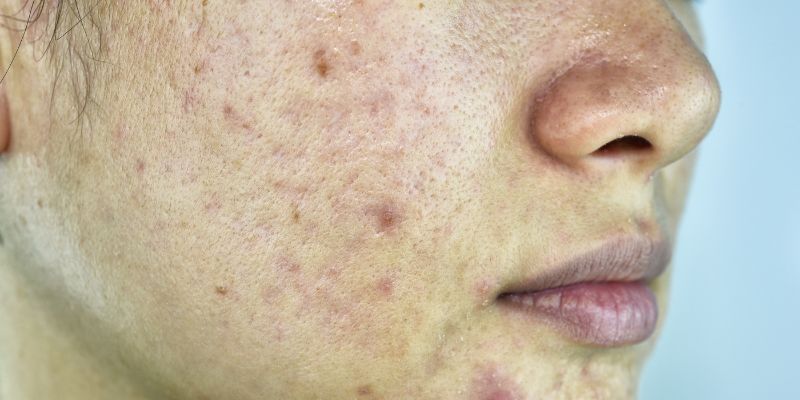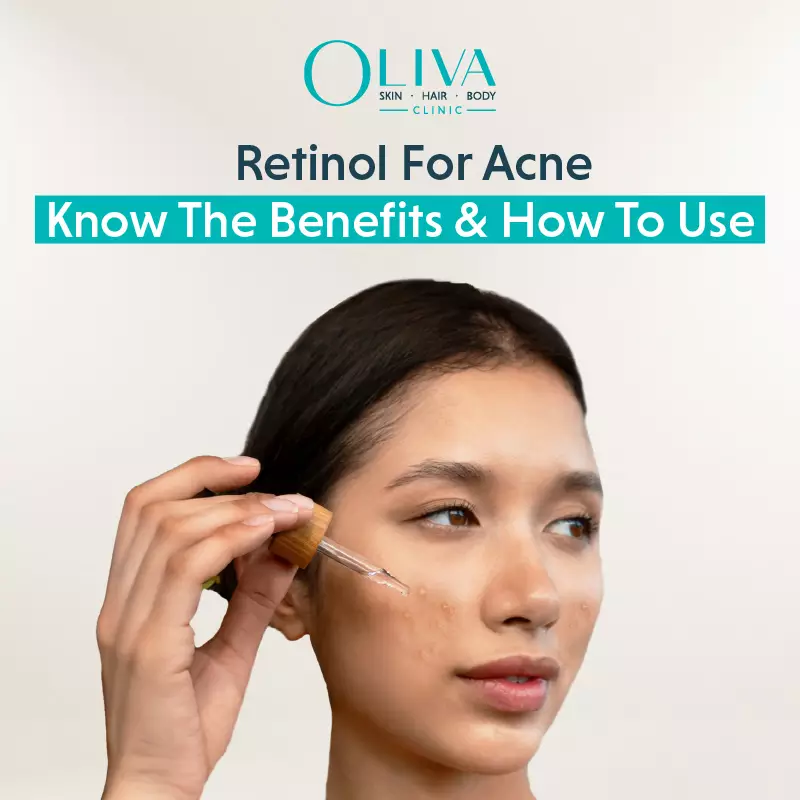How To Reduce Acne Redness?
While pimples are a common skin concern, redness that occurs as an aftermath of pimples is often ignored. Timely treatment of acne redness is critical to safeguard your skin from future scarring or post-inflammatory hyperpigmentation. There are several ways to effectively treat acne redness.
Keep reading to learn about the characteristics, causes, and prevention and treatment of acne redness.
What Is Acne Redness?
Acne redness is characterised as the inflammation of the skin affected by acne, along with irritation and persistent redness in the area. It is common among those with severe, inflammatory acne like pustules, papules, nodules and cysts.
Why Does Acne Cause Redness?
There are several reasons why acne causes redness or red spots, known as post-inflammatory erythema.
Inflammation is the body’s healing response and can occur due to trauma of the skin cells around the pimple. The infected spot is clogged with dead skin cells, debris and bacteria (Cutibacterium acnes), resulting in swelling and redness of the surrounding area. When the skin begins to heal, it becomes more tender and inflamed and also appears red. If this persists for a long time, it turns into dark spots, which is called post-inflammatory hyperpigmentation.
You will also experience acne redness if you pick on your pimples or pop them. Picking or squeezing pimples will leave a red spot even after the infection subsides. It can also cause reddish and purplish scars that can last for weeks.
Redness also occurs when the nutritional needs of the inflamed lesions increase as the cells are active.
How To Get Rid Of The Redness From Acne?
A dermatologist is the right person to treat acne redness. They will conduct a thorough examination of your skin, severity of your acne, and your medical and genetic history. Addressing your acne correctly will also majorly contribute to reducing redness. Dermatologists will then recommend treatments to reduce inflammation, which might include one or more of the following:
- Oral And Topical Antibiotics: Antibiotics effectively reduce inflammation by killing the bacteria inside the hair follicle and controlling the tissue breakdown. Your dermatologist may prescribe oral antibiotics to reduce redness due to inflammatory acne, such as cystic acne. These include doxycycline, minocycline, trimethoprim, cotrimoxazole, etc.
Meanwhile, topical antibiotics usually contain benzoyl peroxide and salicylic acid and help reduce swelling and redness in mild to moderate acne. Salicylic acid is a potent antibacterial that comes in the form of face wash, topical cream and serum to unclog pores, soothe irritation and reduce redness. Benzoyl peroxide is another topical application that doctors might prescribe as spot treatment and works by killing acne-causing bacteria and reducing redness. - Hormonal Medications: Depending on the initial consultation, the dermatologist may prescribe birth control pills to treat stubborn cystic breakouts with persistent redness. This is especially helpful if you suffer from PCOS or a related condition.
- Topical Medications: Topical retinoids soothe inflammation and reduce redness and usually come in the form of creams or gels that you can apply on the affected area, twice a day or as prescribed by the doctor. These also help unclog the pores and speed up the acne-healing process.
EXPERT ADVICE
Niacinamide can help regulate sebum production, decrease inflammation, and improve skin barrier function. Doctors may prescribe topical products that contain 2-5% niacinamide and advise you to apply a thin layer to clean skin in the morning and evening. They may combine it with oral zinc supplements or retinoids for added efficacy. Ensure you follow your dermatologist’s prescription carefully to avoid adverse effects.
- Intralesional Injections: Dermatologists inject corticosteroids to treat acne, which helps reduce swelling and subside redness. These injections also effectively minimise scarring.
- Chemical Peels: Doctors perform controlled exfoliation of the skin’s layers to remove dead skin cells and acne-causing bacteria, soothing inflammation and redness.
When To Visit A Dermatologist?
If you have acne-prone skin, where you experience frequent breakouts and pimples, then you must consult a dermatologist immediately. They will identify the root cause of your pimples and give you timely treatment that can help you manage (and prevent to a certain extent) the aftermath of acne including redness, dark spots and scarring.
How To Prevent Redness Caused By Acne?
Apart from the treatment as prescribed by your doctor, here are some preventive steps you can take to manage acne redness:
- Adopt A Healthy Skincare Routine: Seek your dermatologist’s advice and get a suitable skincare routine. A basic 3-step skincare routine includes cleaning your face thoroughly with a gentle cleanser, moisturising and applying sun protection.
EXPERT ADVICE
Some lesser-known treatments for erythema include green tea extract and azelaic acid with anti-inflammatory properties. Use a gentle, non-comedogenic moisturiser with aloe vera, chamomile, and oatmeal to reduce redness and soothe your skin.
- Use Sunscreen: Make sure to wear sunscreen and protect your skin from the sun’s harmful UV rays that can interfere with acne healing. UV rays also contribute to dark spots, redness and blemishes. Wear protective clothing.
- Avoid Touching Your Pimples: Resist the urge to touch, pop or squeeze your pimples. It leads to more redness and swelling and can also worsen your acne.
- Watch What You Eat: Eating certain inflammatory foods like sugar, starch, alcohol etc, can trigger skin breakouts. Switch to a diet rich in antioxidants like fresh fruits and vegetables that help repair and safeguard your skin barrier.
- Try Cold Compress: Check with your dermatologist and try icing your face, as it can soothe your skin and reduce redness and swelling.
- Never Sleep With Your Makeup: Make sure you use non-comedogenic make-up products and remove it before you go to bed. It can clog the pores and cause inflammatory acne with redness.
- Take Care Of Your Hair: Itchy, flaky, dandruff-ridden scalp can trigger breakouts, hence, make sure that you keep your hair and scalp clean. Shampoo your hair regularly with a mild cleanser.
Conclusion
Redness due to acne is a common occurrence but is often ignored. If you are experiencing redness, inflammation, or skin irritation due to pimples, you must consult a dermatologist immediately. Timely treatment can prevent permanent scarring of your skin. Make sure you also follow the expert-recommended preventive tips and significantly improve your skin health.
Looking for an expert dermatologist?
Walk into any of the Oliva Skin & Hair Clinics and avail our world-class services today!
Frequently Asked Questions
Our certified subject matter experts do extensive research and collate facts from reputed scientific journals and international studies to create informative and engaging articles related to all your dermatology concerns. They strive to help you decipher medical jargon, distinguish fact from fiction and overcome paranoia. Our qualified medical board or expert panel goes a step further to verify these facts based on their rich academic knowledge, vast clinical experience and critical industry insights to ensure you consume only medically accurate content that empowers you to make informed decisions about your hair and skin-care treatments and weight management. Check out our Editorial policy for further details
https://pubmed.ncbi.nlm.nih.gov/22808307/https://www.ncbi.nlm.nih.gov/pmc/articles/PMC3016935/#:~:text=Benzoyl%20peroxide%20(BPO)%20has%20been,moderately%20reduce%20noninflammatory%20acne%20lesions
https://pubmed.ncbi.nlm.nih.gov/28585191/
https://doi.org/10.1017/S0007114515002093











